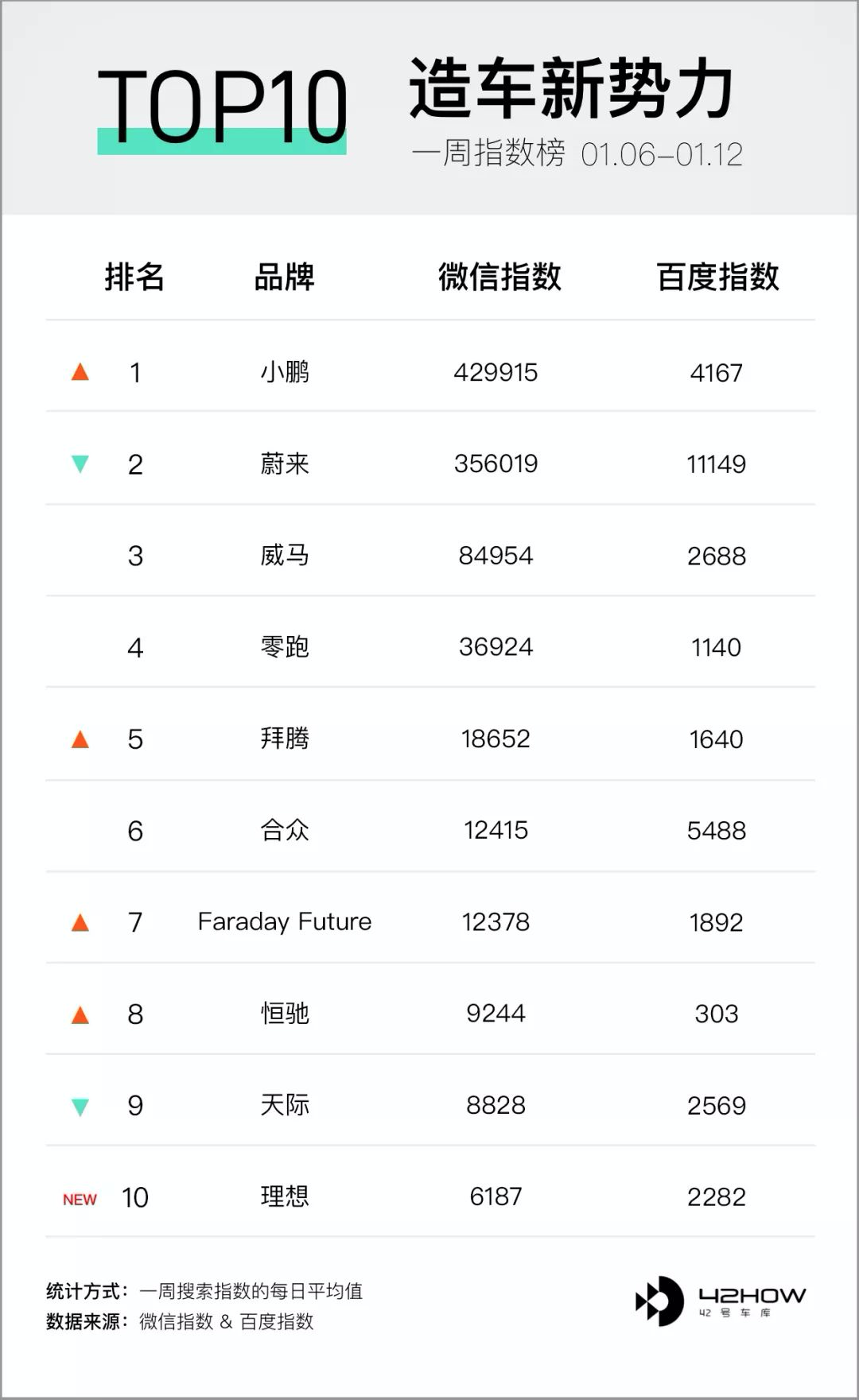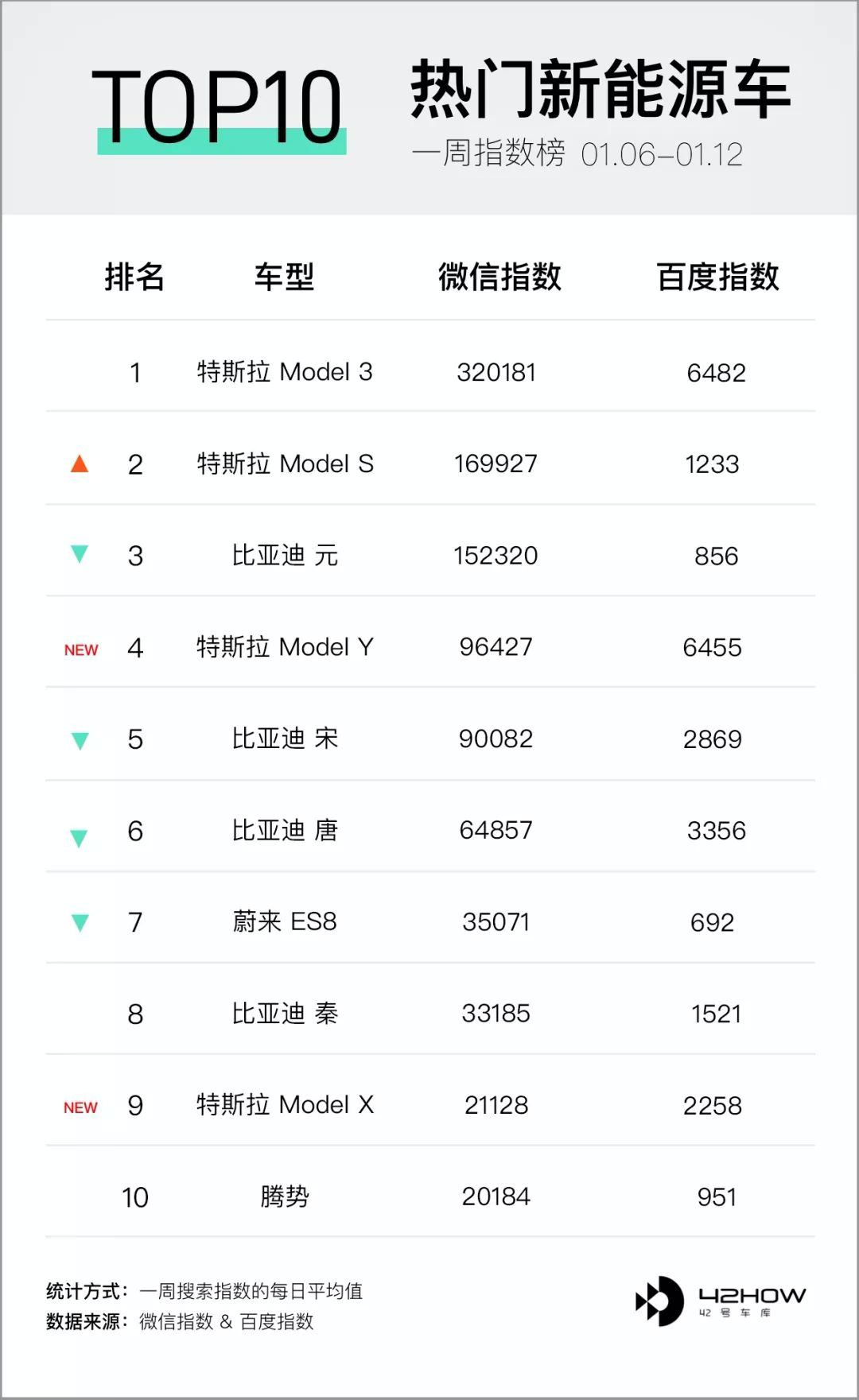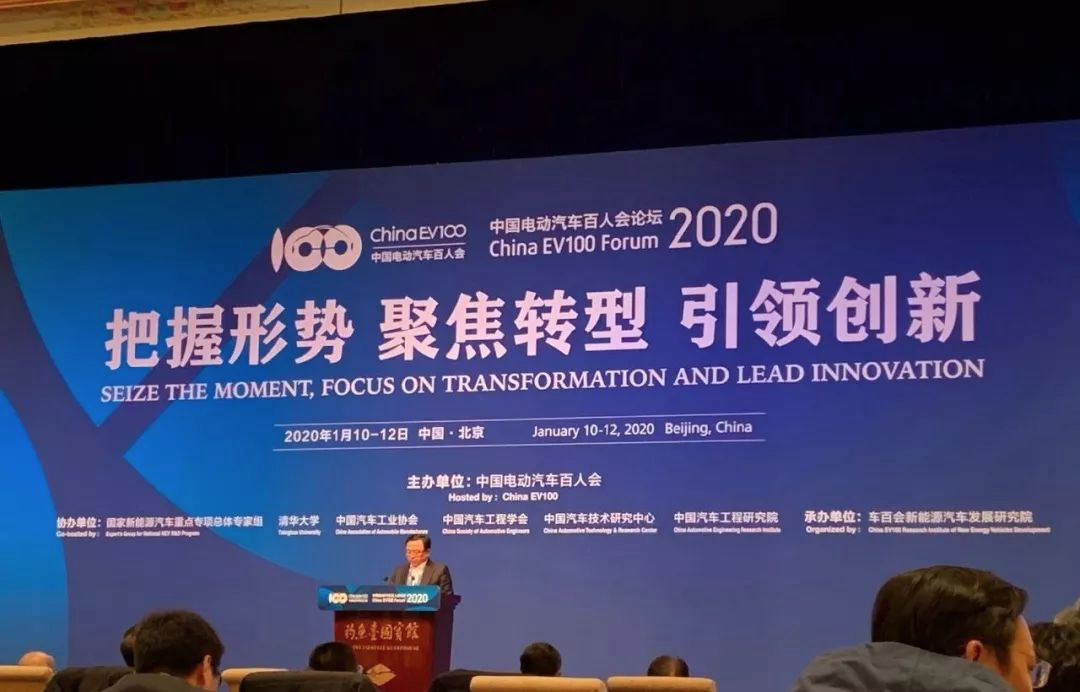PART 1 Weekly Index


PART 2 Weekly News
① 2020 new energy vehicle subsidies will not significantly decline
On the afternoon of January 11, at the China Electric Vehicle One Hundred People’s Forum, Minister Miao Wei said that “the new energy vehicle subsidy will not further decline on July 1, 2020”. This statement shocked the entire new energy vehicle industry.
Journalists later asked: “Can you explain in detail about the statement made by Minister Miao Wei at the China Electric Vehicle One Hundred People’s Forum this afternoon, that the new energy vehicle subsidy will not further decline on July 1, 2020?”
Officials from the relevant departments of the Ministry of Industry and Information Technology responded: “During the forum, many companies asked whether the government subsidy would decline around July 1st this year, and whether it would completely withdraw by the end of the year. To address this widespread concern in the industry, Minister Miao Wei responded at the forum that, to stabilize market expectations and ensure the healthy and sustainable development of the industry, this year’s new energy vehicle subsidy policy will remain relatively stable, and will not significantly decline. We hope that enterprises in the industry will remain confident in their development, increase innovation efforts, improve product quality, strengthen market development, and promote the high-quality development of China’s new energy vehicle industry together.”

Quick Review: After the subsidy decline in 2019, sales of new energy vehicles fell for five consecutive months, and the car market suffered an unprecedented blow. The entire environment was filled with pessimistic voices. In my circle of friends, brands like XPeng and Nio were releasing messages like “countdown to the subsidy, and it is likely to decline again in 2020”.
After the news release at the China Electric Vehicle One Hundred People’s Forum, it can be said that car companies were given a stabilizing pill. The key issue now is to focus on developing good products. The competition in 2020 is about to start, leaving more space for major car companies to make their moves, and it remains to be seen who will win in the end.
② Sony launches new Vision-S car
At this year’s CES, Sony unveiled an electric concept car called Vision-S, which was developed by Sony and many other manufacturers including NVIDIA, Qualcomm, ZF, Bosch, BlackBerry, and Magna. According to The Verge, Vision-S has 33 different sensors (including CMOS and ToF) inside and outside the vehicle, and is also equipped with a 360 Reality Audio sound system.
According to the official website, the length, width, and height of the car are 489519001450 mm, and the wheelbase is 3000 mm. In terms of power, it will be equipped with two 200 kW electric motors and use a dual-motor four-wheel-drive system. The acceleration time from 0 to 100 km/h is 4.8 seconds, the maximum speed can reach 240 km/h, and the weight of the vehicle is 2350 kg.
Comment: After the release of Sony Vision-S, it has caused a lot of discussion in both the automotive and tech circles. In terms of the current market situation in Japan, Toyota mainly produces hybrid models in the field of new energy vehicles; Honda launched the Honda e only to comply with emissions regulations; and although Nissan is paying more attention to new energy vehicle models, the competitive advantage of its flagship model, LEAF, has begun to emerge, and developing into the smart direction has become a problem that Nissan needs to consider.
Against this background, it appears feasible for Sony to make a move in the field of new energy vehicles. Even if Sony cannot produce cars, the demand for ADAS hardware and in-vehicle entertainment components is increasingly strong. The Vision-S showcases the strengths of these two aspects, so if Sony continues to improve in these areas in the future, it will not lose out.
NIO’s new car delivery in December 2019 set a new record.
On January 6th, NIO officially announced the delivery number for December 2019 and the total number of vehicles delivered in 2019. NIO delivered 3170 new cars in December 2019, a 25% increase from the previous month and a year-high for 2019.
In addition, NIO delivered a total of 20,565 vehicles in 2019, of which ES8 accounted for 9132 units and ES6 accounted for 11433 units. From 2018 to 2019, NIO’s total brand delivery was 31,913 vehicles, of which 20480 were ES8 and 11433 were ES6.> Quick comment: In December 2019, NIO ES6 still held the major sales figures, with 2547 units registered for insurance according to the data from China Automotive Technology and Research Center. This once again demonstrates the success of this vehicle model. Additionally, ES6 ranked 10th among mainstream luxury midsize SUVs in terms of registered for insurance in December. As the new year begins, let us wait and see whether NIO ES6 can achieve greater success.
④ Domestic Tesla Model 3 officially delivered
On January 7, the domestically manufactured Tesla Model 3 was officially delivered in China. At the ceremony, 10 owners received their keys from Elon Musk, who even danced on the spot in delight. Within just one year, the Tesla Shanghai Gigafactory has completed the construction and delivered production, setting an industry record with “Chinese speed.” Elon Musk also stated that “without the Chinese government, there would be no Gigafactory today.” In addition to the domestic Model 3 being officially delivered, the China-manufactured Model Y project also officially began.
Quick comment: January 7, 2020 was a historic day for Tesla and a historic year. Domestic Tesla takes an important step in China and officially begins the journey of overturning the traditional automotive market in China. Looking at the domestic Model 3, its price is below 300,000 RMB, which means that it will compete with traditional luxury brands such as BMW, Benz, and Audi. Would you choose the same-class BMW 3 Series, Audi A4L, or Mercedes-Benz C-Class with determination, or would you consider comparing them? Perhaps in the old days, there was no need to consider, but now most people would make some comparisons. What about you, how would you choose?
⑤ Geely and Mercedes-Benz establish a new company
On January 8, Geely and Mercedes-Benz officially established the smart brand global joint venture- Zhejiang Geely Holding Group’s Global Sales Company Limited and Mercedes-Benz AG’s subsidiary, Mercedes-Benz China Ltd., to form Smart Automobile Co., Ltd. Its global headquarters is located in the Hangzhou Bay New District of China, with marketing centers set up in China and Germany. The registered capital is 5.4 billion RMB, with each party contributing 2.7 billion RMB, and Mercedes-Benz AG mainly gaining the corresponding shares in the form of an investment in the smart brand.
Both sides will exert synergies in fields such as R&D, manufacturing and supply chain, and commit to build smart into a high-end electric intelligent automotive brand. The all-new generation of pure electric smart will be designed by Mercedes-Benz and developed by Geely. The new vehicles will be produced in a new factory in China, and will be launched in the market and sold globally in 2022.
In addition, at the 2019 Frankfurt Motor Show, smart officially released two new models, the smart EQ fortwo and the smart EQ forfour. Both new vehicles are equipped with a 17.6 kWh power battery pack with a NEDC range of 159 km. In terms of power, both vehicles are equipped with a permanent magnet synchronous motor with a maximum power of 60 kW and a peak torque of 160 N·m.
Quick Comment: The establishment of Smart Daimler Mobility (SMD) marks the imminent localization of the smart brand. Looking at the two gasoline-powered models currently sold by smart in China, their price range is roughly between RMB 120,000 and RMB 200,000. If the all-new generation of pure electric smart is localized, it is possible that it will venture into the price range below RMB 100,000. Moreover, sales of pure electric mini-cars priced below RMB 100,000 are quite substantial. If so, pure electric smart still has great potential. However, is it somewhat embarrassing that the new pure electric smart has a range of only 159 km? After all, the range of the TQi electric tricycle announced by Segway-Ninebot at CES was 200 km.
This article is a translation by ChatGPT of a Chinese report from 42HOW. If you have any questions about it, please email bd@42how.com.
